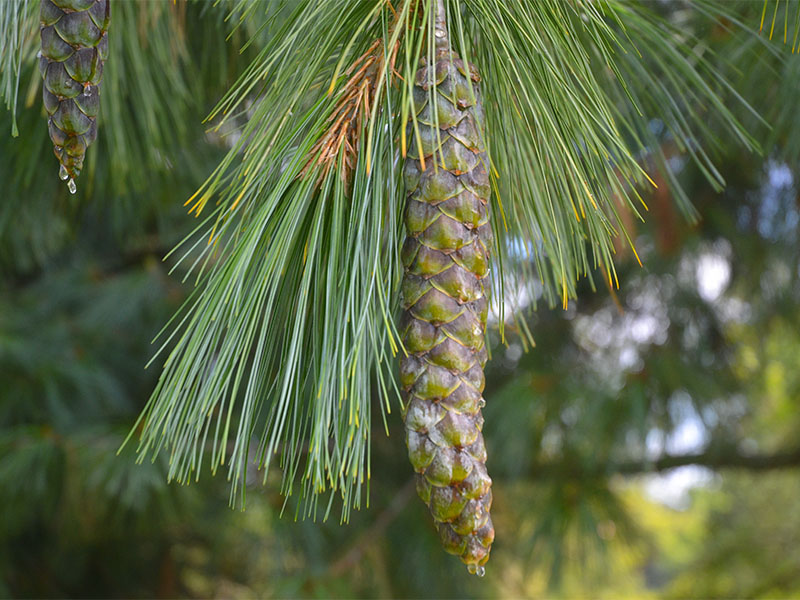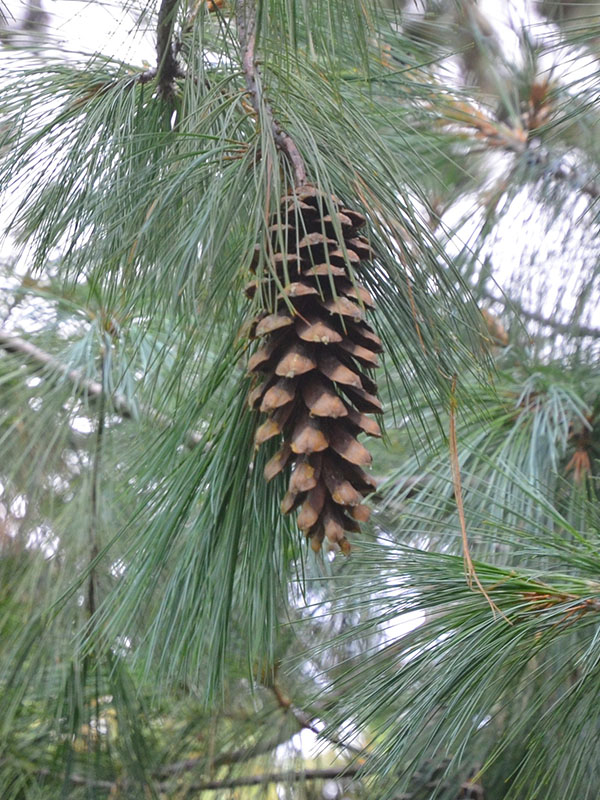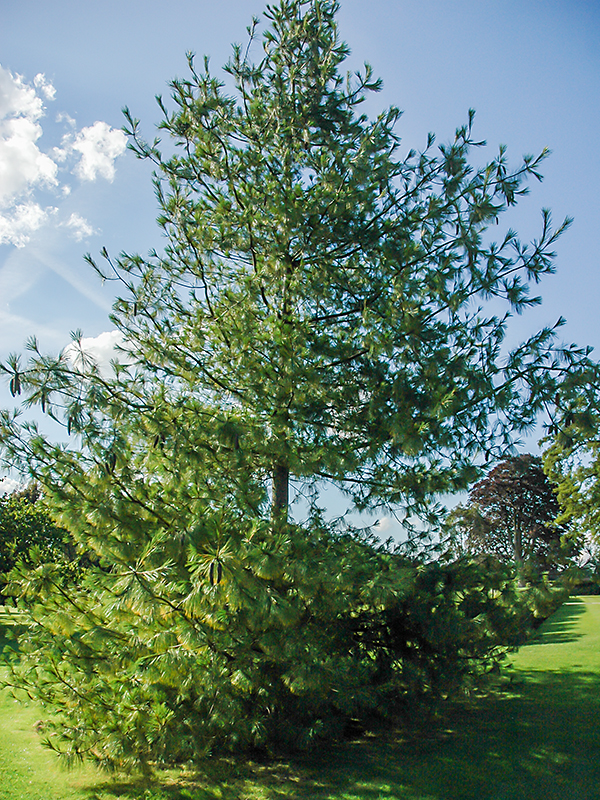
Woody > Pinus > Pinus wallichiana > Pinus wallichiana
Pinus wallichiana
Himalayan Pine or Bhutan Pine
Origin: Himalayan Mountains including the Annapurna region in western Nepal. Introduced into cultivation in 1827.
| Family |
| Pinaceae |
| Genus |
| Pinus |
| Species |
| wallichiana |
| Category |
| Woody |
| Type |
| Tree (evergreen) |
| Pronunciation |
| USDA Hardiness Zone |
| 4 - 7 |
| Canadian Hardiness Zone |
| 2a - 6b |
| RHS Hardiness Zone |
| H6 - H7 |
| Temperature (°C) |
| -34 - (-15) |
| Temperature (°F) |
| -30 - 5 |
| Height |
| 10 m |
| Spread |
| 6 - 9 m |
Photographs
Description and Growing Information
Flowering Period
| General Description |
| A large, gracefully growing specimen. |
| Landscape |
| Used as a showy tree in big areas and is excellent as a specimen or accent plant. |
| Cultivation |
| Likes well-drained, sandy light soils. Will grow best if sheltered from harsh winds. |
| Shape |
| Upright broadly pyramidal. |
| Growth |
| Fast |
| ID Characteristic |
| The needles bend near the base causing the pendulous look. |
| Pests |
| Damping off, root rot, dieback, blister rust, canker, blight. Scale, pine needle miner, pine weevil, bark beetles and pinewood nematode. |
| Habitat |
| Elevations between 4000 - 8000 m. |
| Bark/Stem Description |
| The bark is initially smooth but develops shallow fissures and flakey plates over time. |
| Flower/Leaf Bud Description |
| The winter buds are slightly resinous. |
| Leaf Description |
| Needles are 12-20 cm long, soft and found in fascicles of five. Young needles stand straight up while the older ones droop. |
| Flower Description |
| Monoecious. The male strobili are found low in the crown in dense clusters. The females are found higher in the crown which start off standing up straight but eventually become pendulous. |
| Fruit Description |
| Cylindrical resinous cones that are 15 - 30 cm long. Young cones sit straight up but do become pendulous as they age. The cones are curved much like a banana. |
| Colour Description |
| The needles are blue/green in colour. The under part of the needle is a white/blue colour giving the tree a silvery/blue cast. Yellow flowers. Brownish-grey cones. |
| Texture Description |
| Medium, feather-like needles. |
| Notable Specimens |
| The Niagara Parks Botanical Gardens, Niagara Falls, Ontario, Canada. VanDusen Botanical Garden, Vancouver, British Columbia, Canada. |
| Propagation |
| By seed. |
-1.jpg)



-1.jpg)


